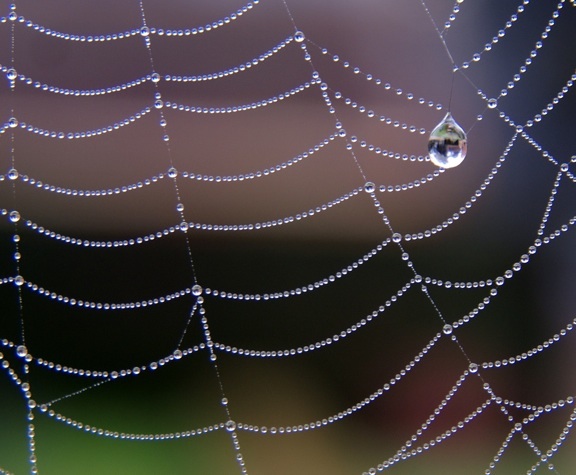博文
晨曦的2.718
||
法布尔(Henri Fabre)看昆虫,不仅看小虫们的生活,还看他们的艺术和数学。他在《蜘蛛生活》(TheLife of Spider)后面加了一个数学的附录——数学家看不起而昆虫学家不关心的东西。他说,蜘蛛网(特别是Silky Epeira和Banded Epeira,我不知道什么品种)的结构犹如妙手偶得,无意间就做成了教堂里的玫瑰窗。(An operation without method, governed, one might imagine, by anirresponsible whim, results in a beautiful rose-window worthy of our compasses.)老法说an irresponsible whim,大概不想让蜘蛛“懂数学”,而只是本能而已。相比之下,我们却堆了那么多公式,难道没有更简单的办法了么?(Will it never be given to us to probe reality in a simpler fashion?Will our intelligence be able one day to dispense with the heavy arsenal offormulae?)(人类理性费那么大力气重新发现小动物们本能的东西,是进化了呢还是进化了呢?)
接着,老法写了一段如魔咒似的(abracadabric)e的赞歌:在薄雾的清晨,黏黏的蛛网丝上,落着一颗颗小水珠,弯成一条条悬链线,串成一根根晶莹的珠链。当晨曦透过薄雾,整个蛛网闪耀着虹的亮光,犹如一盘夺目的珍珠。它的荣耀就来自e。
Here we have theabracadabric number e reappearing, inscribed on a Spider’s thread. Let us examine, on a misty morning, the meshwork that has been constructed during the night. Owing to their hygrometrical nature, the sticky threads are laden with tiny drops, and, bending under the burden, have become so many catenaries, somany chaplets of limpid gems, graceful chaplets arranged in exquisite order and following the curve of a swing. If the sun pierce the mist, the whole lights upwith iridescent fires and becomes a resplendent cluster of diamonds. The number e is in its glory.
e从哪儿来的呢?别忘了,悬链线是双曲函数。于是我们有了e的新意象:露珠落在蛛网上。

https://wap.sciencenet.cn/blog-279992-808600.html
上一篇:莎士比亚的“罪恶”
下一篇:怀西湖
13 李笑月 武夷山 陈小润 陈湘明 钟炳 袁江洋 李轻舟 吉宗祥 李学宽 anran123 luxiaobing12 fangfeng1979 Vetaren11
该博文允许注册用户评论 请点击登录 评论 (2 个评论)
全部作者的精选博文
- • 被拍卖的爱因斯坦方程
- • 彭罗斯的新物理狂想曲
- • 再说霍金彭罗斯
- • 彭老说黑洞
- • 314与137
- • 爱丽丝镜子里的时空奇点
全部作者的其他最新博文
- • 被拍卖的爱因斯坦方程
- • 彭罗斯的新物理狂想曲
- • 再说霍金彭罗斯
- • 永遇乐 辛丑元日还乡
- • 望海潮 元旦过锦江
- • 北京至成都过五城